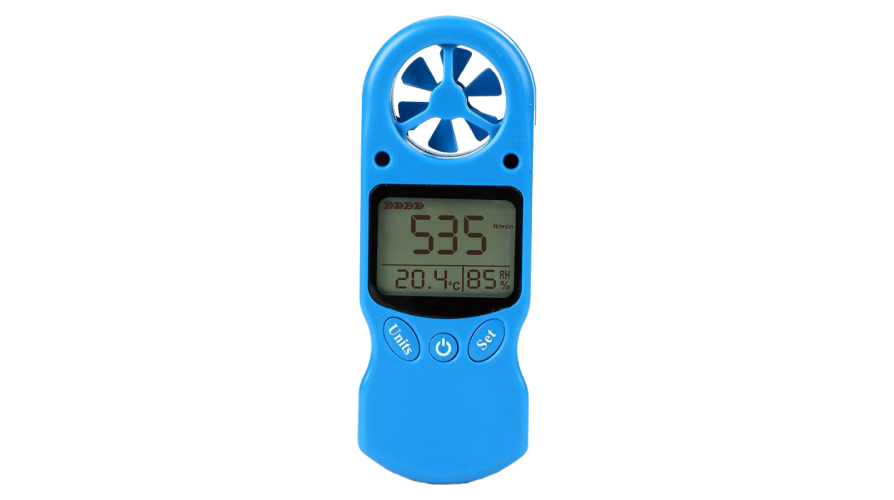Anemometer Innovations: The Most Recent Innovation for Wind Speed Measurement
Anemometer Innovations: The Most Recent Innovation for Wind Speed Measurement
Blog Article
All You Required to Understand About Anemometers: How They Function, Why They Matter, and Where to Use Them
Anemometers, however commonly neglected in the world of scientific tools, play an important function in numerous fields, using useful insights right into wind rate and air flow patterns. Recognizing the mechanics behind these tools is vital for anyone seeking to harness the power of this data. From meteorologists tracking weather condition patterns to engineers developing frameworks with wind lots in mind, the applications of anemometers are diverse and far-ranging. As we explore the intricacies of anemometer innovation, we will certainly reveal the inner workings of these gadgets, their value, and the essential considerations when choosing the appropriate anemometer for specific applications.

Anemometer Fundamentals
A necessary instrument used to determine wind speed and instructions, the anemometer plays a crucial role in weather forecasting and various markets. An anemometer usually includes 3 or four cups that revolve in the wind, a vane that directs into the wind, and sensing units to track the activities or turnings. By calculating the turnings or motions over a specific amount of time, the anemometer can figure out wind speed. The vane aids determine wind instructions by directing into the wind, giving useful data for climate forecasting, aeronautics, maritime operations, ecological tracking, and wind power applications.
There are numerous sorts of anemometers readily available, including cup anemometers, vane anemometers, hot-wire anemometers, and sonic anemometers, each with its one-of-a-kind functions and applications. Cup anemometers are generally made use of for standard wind speed measurements, while vane anemometers are favored for directional dimensions. Hot-wire anemometers appropriate for low airspeeds, and sonic anemometers are suitable for high-precision measurements in research study and commercial setups. Understanding the fundamentals of anemometers is essential for accurate wind data collection and evaluation throughout various sectors.
Principles of Anemometer Operation
Building on the fundamental understanding of anemometer basics, the concepts of anemometer procedure elucidate the mechanics behind wind speed and instructions dimensions. Cup anemometers, for instance, have 3 or even more cups that capture the wind, triggering them to spin quicker as the wind speed increases. Hot-wire anemometers count on a warmed wire that cools down as wind passes over it, with the rate of cooling down establishing the wind speed.
Value of Anemometers
The value of anemometers in weather forecasting and different sectors can not be overemphasized. Anemometers play a crucial role in measuring wind speed and direction, giving vital data for weather projecting, climate research studies, ecological surveillance, and aeronautics procedures. Meteorologists count on anemometers to collect exact wind data, assisting them recognize climate patterns, predict storms, and concern prompt warnings blog here to the public. In industries such as building, farming, sustainable energy, and maritime operations, anemometers are used to enhance procedures, make certain security, and boost efficiency. For instance, wind farm drivers use anemometers to analyze wind conditions and take full advantage of electricity manufacturing from wind turbines. In the maritime industry, anemometers help ship navigating by giving real-time wind info to captains, aiding them make notified choices to guarantee risk-free trips. Generally, anemometers are crucial tools that add dramatically to safety, performance, and educated decision-making in weather forecasting and a large array of markets.
Applications Across Different Industries
In the sustainable power field, anemometers play an essential duty in assessing wind conditions for wind farm positionings, making sure optimum power manufacturing. Industries like building and mining make use of anemometers over here to check wind speeds, critical for security procedures, specifically when working at heights or in open-pit mines where strong winds can position threats. In farming, anemometers assist farmers in managing plant spraying by giving real-time data on wind speed to stay clear of drift.

Picking the Right Anemometer for Your Needs
For general purposes, a mug anemometer is appropriate for measuring wind rate, while a vane anemometer offers wind direction data. Hot-wire anemometers are perfect for reduced airspeed dimensions, and ultrasonic anemometers use high accuracy and toughness.

Conclusion
In conclusion, anemometers play a critical role in determining wind rate and instructions throughout various markets. It is crucial to take into consideration the importance of anemometers in order to make educated choices when picking the most suitable gadget for measuring wind conditions.
There are different kinds of anemometers readily available, consisting of cup anemometers, vane anemometers, hot-wire anemometers, and sonic anemometers, each with its special attributes and applications. Mug anemometers are commonly used for basic wind speed measurements, while vane anemometers are liked for directional dimensions. Hot-wire anemometers are appropriate for reduced airspeeds, and sonic anemometers are excellent for high-precision measurements in research and industrial settings.Structure on the fundamental understanding of anemometer basics, the principles of anemometer procedure clarify the mechanics behind wind rate and instructions dimensions. For general functions, a cup anemometer is suitable for measuring wind speed, while a vane anemometer provides wind instructions information.
Report this page